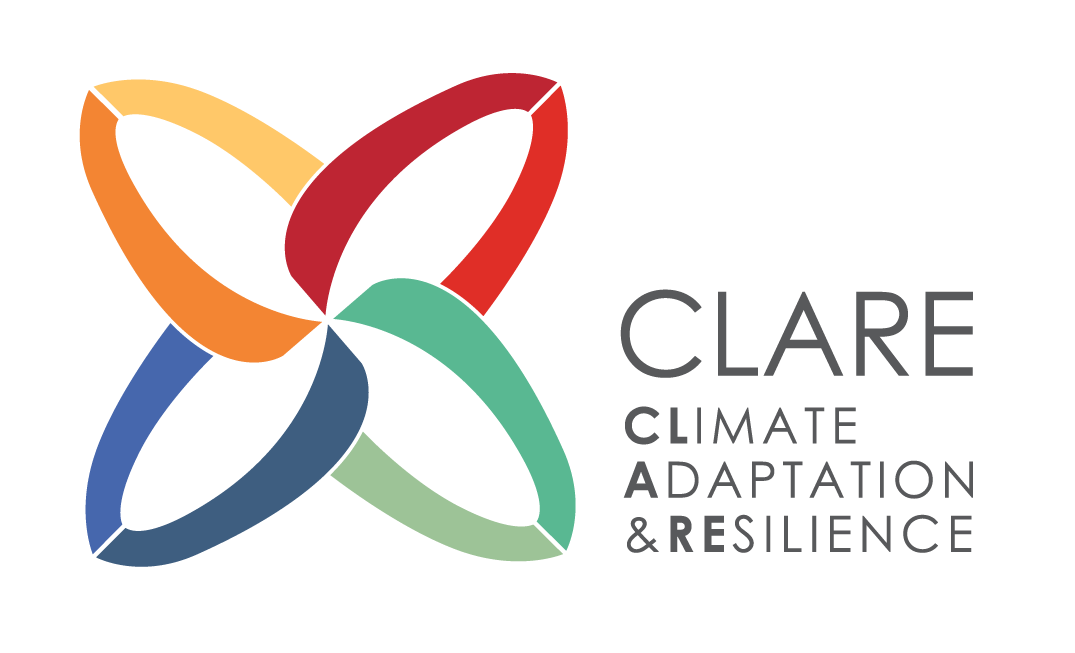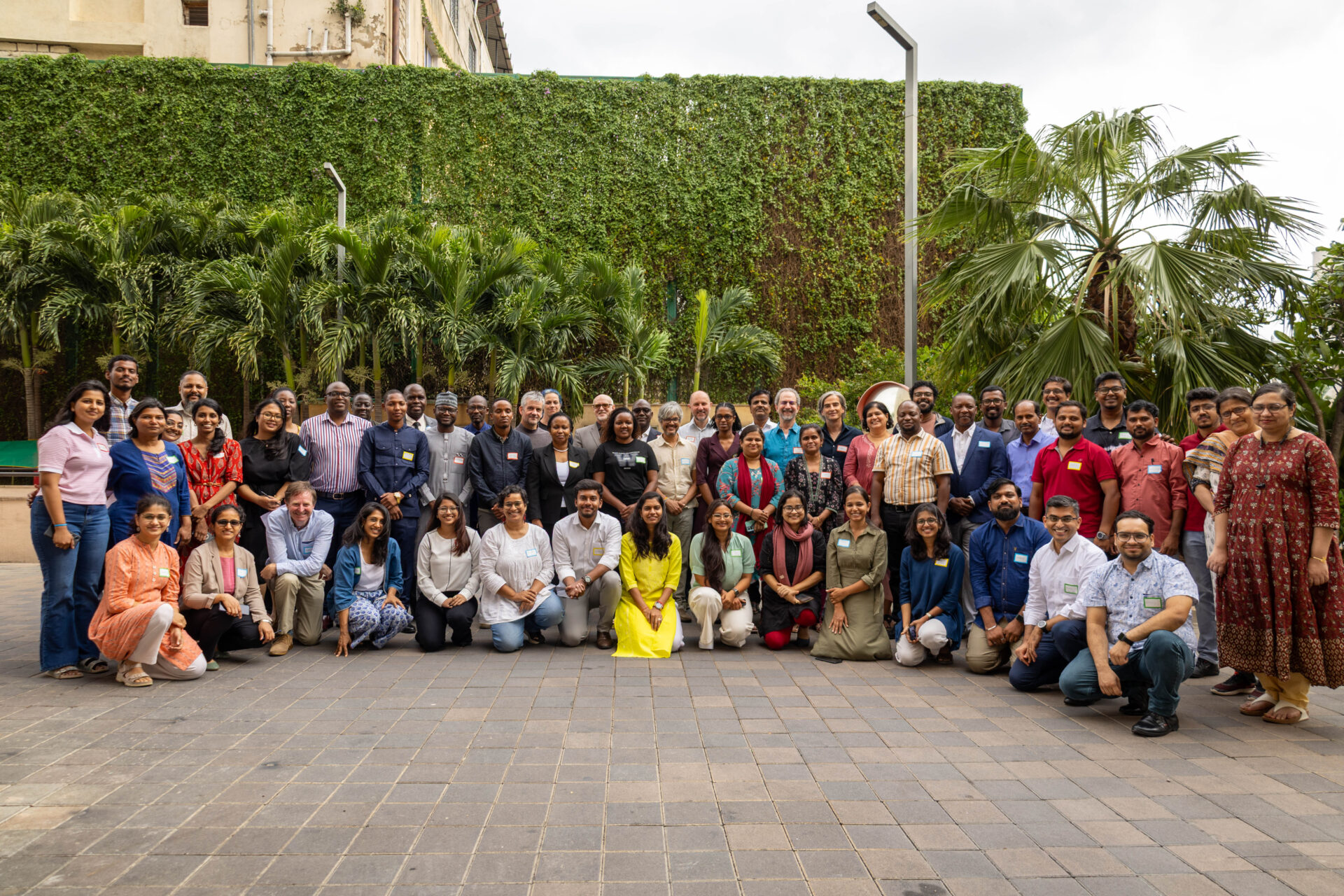
Synthesis of Transformation Lab Learnings: Methods, Insights, and Solutions
/
Climate Adaptation Resilience In Tropical DrYland (CLARITY)
Second In-Person Annual Meet, 2025
Authors:
Veena Srinivasan, WELL Labs, Bengaluru, India
Richard Taylor, University College London, United Kingdom
Adrian Healy, Cardiff University, United Kingdom
This document presents a synthesis of cross-Transformation Lab (T-Lab) learnings gathered during the CLARITY Annual Meet held in Bengaluru, India from June 23rd to 28th, 2025. The discussions and sessions brought together diverse disciplinary approaches and contextual insights across the T-Labs in India, Niger and Tanzania. Key learnings have been organized into three broad categories: Methods, Insights, and Solutions, each capturing specific practices, reflections, and strategies that emerged across the T-Labs.
The meeting surfaced several cross-T-lab learnings
Broadly, these fell into three categories: Methods, Insights, Solutions
Methods
Throughout the Annual Meet we had several “deep dives” into common methodological approaches that are being attempted across the Transformation Labs in Niger/Nigeria (Maradi-Katsina), Tanzania (Dodoma) and India (Raichur and Chintamani-Chikkaballapur).
Pathways and Multi-criteria Analyses: Our team from the Institute of Development Studies (IDS), London facilitated a workshop to ensure a unified understanding of the pathways approach and multi-criteria analyses. The T-Lab teams worked in small groups to work to define the pathways and criteria. Each team member then assumed a specific identity (e.g. women landless farmer, irrigation engineer etc.) and ranked the pathways according to the criteria. This mock exercise was a precursor of how the process might play out in each T-Lab.
The exercise helped the teams understand some pitfalls of how the dynamics of multi-stakeholder sessions might result in some voices being underrepresented and why it might be necessary to conduct the multi-criteria Analysis exercises in smaller homogeneous groups.
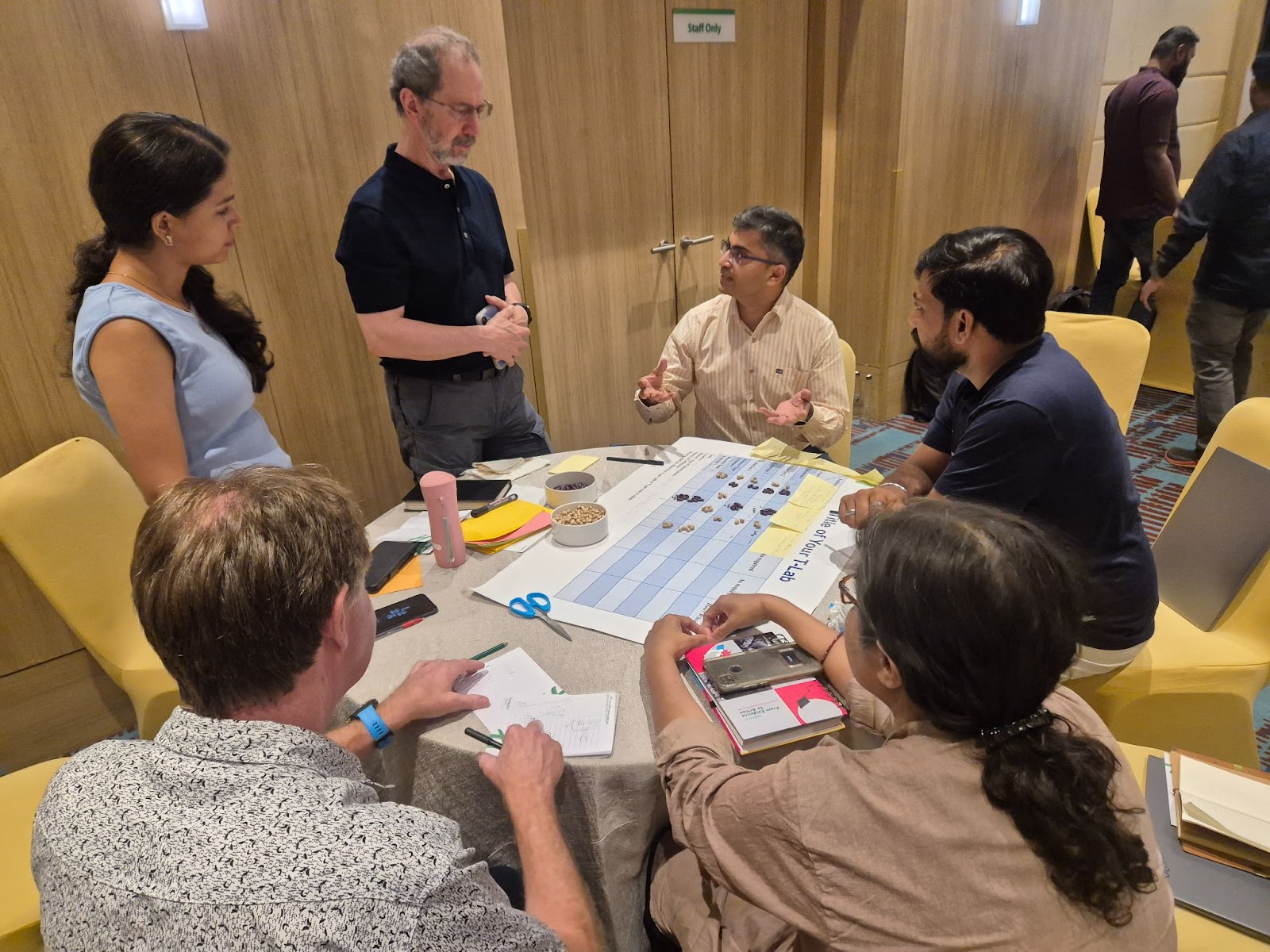

It also helped the teams understand the “messiness” of the process and how what is likely to emerge in reality is a composite pathway. It also became clearer that the pathways as narratives would run in parallel to modelling processes. Modelling itself would feed crucial information into the pathways but not seek to simulate every aspect of the narrative pathway in its entirety.
The selection of pathways to date provides collective insights that can be drawn on to inform more generic (scaling up/out) lessons for wider dissemination. Further description of the pathways will assist the synthesis process.
Use of stable-isotope ratios in Oxygen & Hydrogen to trace water movement: Project team members from University College London and British Geological Society conducted a training session on isotope sample collection – the teams learned how to design the sampling methodology, how to collect, store and label the samples and how to send them for analysis. The session was also attended by state engineers of the Advanced Centre for Integrated Water Resources Management (ACIWRM).
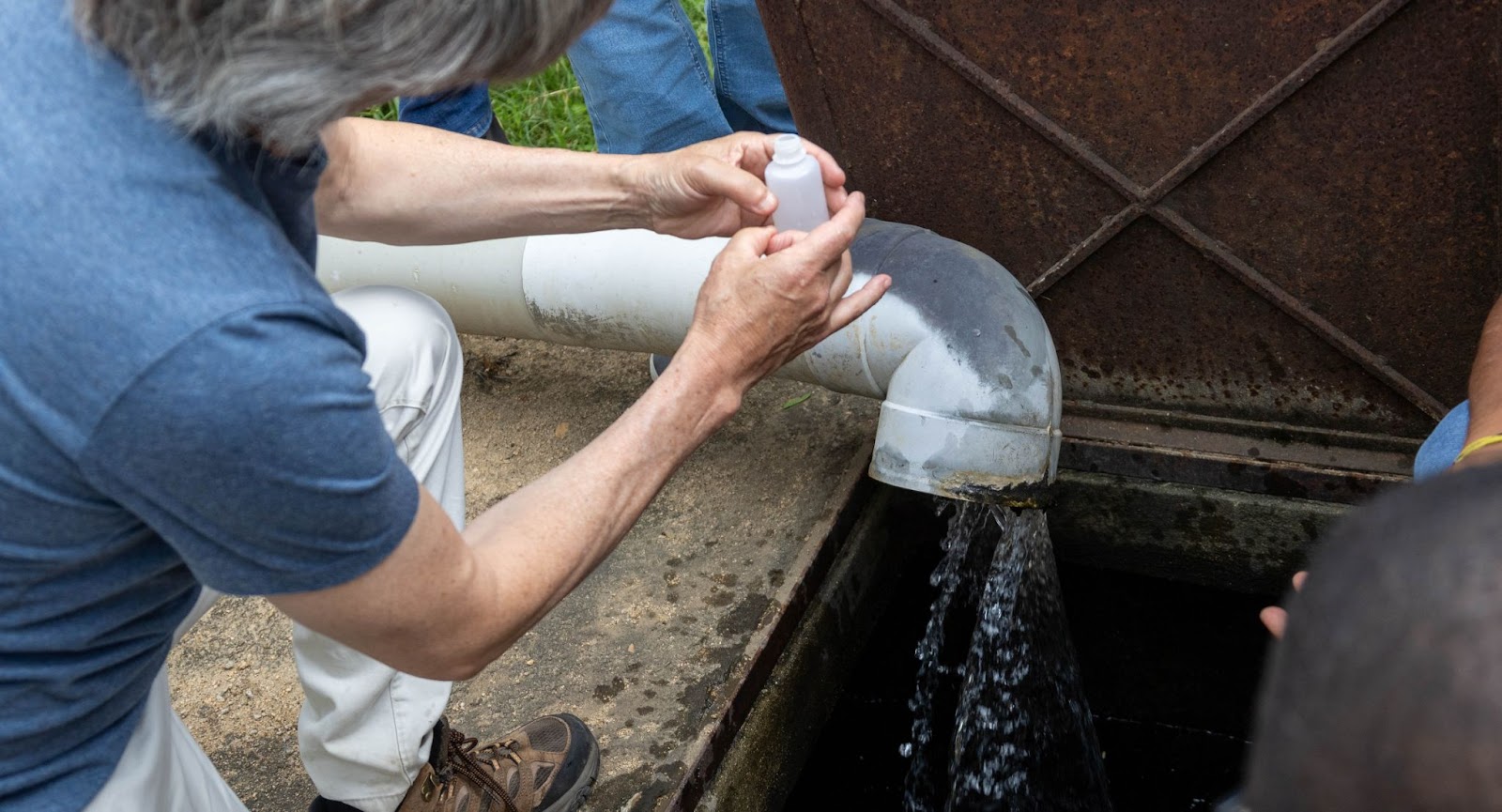
DRYland Partitioning (DRYP) Modelling: The Cardiff team conducted a follow-up training from the Winter School with the physical science researchers using the DRYP model. The DRYP model is a parsimonious hydrological model designed to quantify water partitioning in dryland regions, focusing on key processes like evaporation, groundwater recharge, and streamflow.
The DRYP session involved a stock taking of where each T Lab stands. Dodoma is in the most advanced stage of development, undergoing calibration runs. The Maradi-Katsina model represents recent observations and is proceeding to the calibration stage. The India T-Lab models with a greater degree of human influence on T-Lab hydrology, have issues with unknowns related to actual irrigation points and quantum of groundwater abstraction. We discussed alternative methods of representing these based on a crop pattern and cell-wise water balance approach — which was well received. This is our immediate next step. An important decision was taken in terms of prioritizing baseline models using gridded Climate Hazards Group InfraRed Precipitation with Station data (CHIRPS) rainfall data, especially in Africa T Labs with low rain-gauge densities. Use of historical and projected Climate Predictions for Africa (CP4A) rainfall data was considered to be of secondary priority relative to use of Coupled Model Intercomparison Project Phase 6 (CMIP6) climate projections to perturb gridded CHIRPS data in Dodoma and Maradi-Katsina models; the India T-lab will continue using Indian Meteorological Department datasets.
In terms of calibration of models, the decision was to focus on six parameters – aquifer saturated hydraulic conductivity (Ksat), specific yield, river decay, root depth, river width, available water content.
The session was also attended by state engineers of the Advanced Centre for Integrated Water Resources Management (ACIWRM). ACIWRM’s presence was also very helpful – and they have promised access to other useful data sources, including groundwater monitoring stations of the Water Resource Department, Government of Karnataka.
Gender disaggregated analysis: The gender experts across the T-Labs (Devota Mosha and Seema Bhaskaran) collaborated to present some theoretical frameworks to analyze qualitative data collected through focus group discussions. Some of the frameworks that were discussed were the Harvard Gender Analysis Framework, Moser’s Gender Roles Framework and Gaventa Power Analysis Framework.
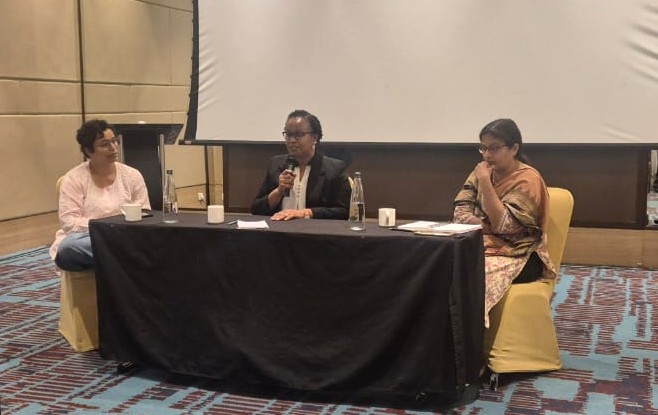
Ensuring more inclusive pathways would include:
- Co-designing with separate and mixed groups, ensuring hidden burdens and aspirations are surfaced.
- Building on existing informal women’s strategies (like grain banks, mutual water sharing) and scaling them up formally.
- Prioritizing interventions that reduce unpaid burdens (like village water supply schemes vs. only promoting farm ponds managed by men).
- Embedding access and control conditions, e.g. climate funds tied to joint land titles or irrigation user committees with quotas for marginalized women.
Structured writing: The WELL Labs and IDS teams collaborated on a structure writing “Write-shop”. Early career researchers were exposed to principles of narrative development and structured writing. Each team member was then encouraged to present the argument structure of their papers.
electronic – Participatory Rural Appraisal (e-PRA): The e- Participatory Rural Appraisal Method involved using Google Earth images as part of crop security planning. The workshops were conducted in Raichur and Chikkaballapur and the method was demonstrated during the Chintamani field trip.
The other T-Lab staff appreciated how it allowed the stakeholders to take control of the exercise by aligning the map according to the geographical directions and also the pictures that showed old and young people working together, each bringing their strengths to the exercise. One village elder was quick to find a stick to point out in the map. Then they started identifying their settlements, roads, lands, streams, wells and borewells etc. one by one. The younger ones were the most active, maybe due to their familiarity with Google maps.
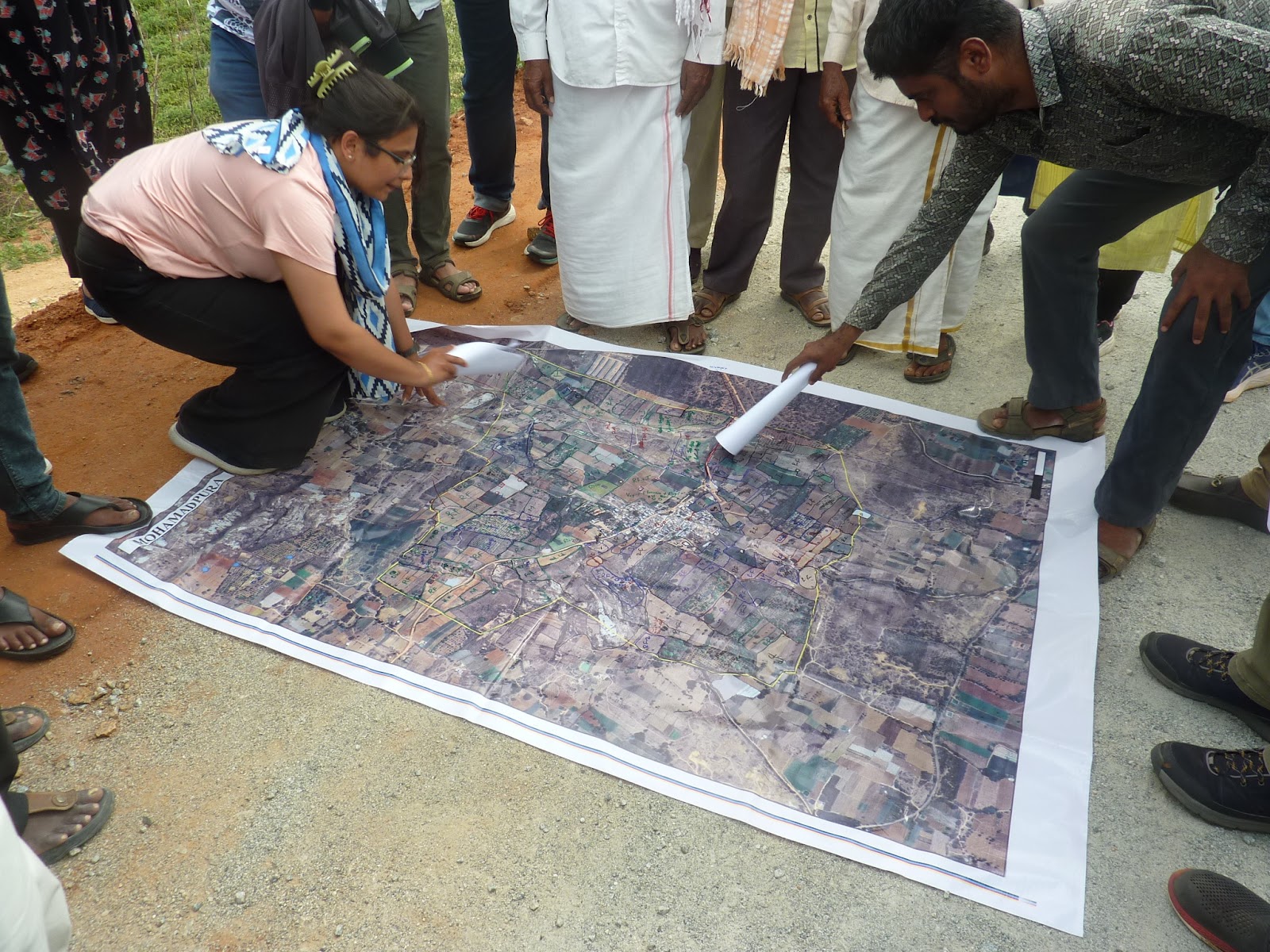
Artificial Intelligence (AI) Tools: Early career researchers at WELL Labs presented the use of Generative AI tools – not as a writing tool – but for supporting analytical and transformation work within the T-Labs. The tools included:
ChatGPT – for analyses of large datasets where quantitative data is embedded in a qualitative descriptive field. E.g. data on dwelling units embedded into descriptive.
Notebook LM – to aid as a learning tool for new concepts and mind map development.
WhatsApp Chatbots – to enable dissemination of information to stakeholder groups.
This also opened up a discussion on the use of Gen AI tools, what the costs and benefits are, how they should be acknowledged in publications etc.
Insights:
The Annual Meet also resulted in several “A-Ha” moments – insights from another T-Lab that resulted in changing how people began to think about their own T-Lab or their conceptual framework.
Properties of basement aquifers
Geophysical studies in India, together with well testing data in East Africa, show that the number (and bulk transmissivity) of fractures and secondary porosity decrease with depth. Further, there is evidence in both regions that water being pumped even at several hundred meters is “modern (<60 to 70 years) groundwater”. This evidence suggests that there is no magical source of water at depth – as many water resources agencies across the world would like to believe. The Chintamani case study shows that well depths over 500 m showed no increase in yield. An emerging theme – relevant to all three T-Labs – is a renewed focus on ‘managing the shallows’ – what is visible and what we know exists.
Recharge mechanisms: A lot of the recharge in drylands occurs as “focused recharge” – via infiltration from perennial (or ephemeral) lakes and rivers. This can occur through preferential or bypass flows into aquifers. The rate at which recharge reaches, even at depths of tens to hundreds of metres, can be quite significant yet improved monitoring is required to accurately assess these recharge fluxes.
Renewable vs Sustainable Groundwater: Groundwater renewability, commonly defined as extraction less than recharge, is conservative and fails to consider groundwater use beyond human needs. In reality, groundwater pumping induces increases in recharge and reduces groundwater discharges to surface waters (baseflow), springs, evapotranspiration and adjacent aquifers. These collective changes, known as freshwater capture, explicitly acknowledge that “All water discharged by wells is balanced by a loss of water somewhere.”
Groundwater withdrawals can be considered physically renewable if they do not exceed freshwater capture but, potentially, may be socially or environmentally disastrous over particular timeframes. Groundwater withdrawals exceeding freshwater capture are non-renewable and lead to groundwater depletion as has occurred in the Chintamani T-Lab. Sustainable groundwater withdrawals require explicit recognition that ground and surface water form a singular resource, and of socio-hydrological considerations such as ecosystem protection and equity of access.
Questions worth asking across the T-Labs are not only from where does pumped groundwater come but what are the consequences of its use?
Research for Impact and Transdisciplinarity:
- A key insight was that for impact to eventualise, we need to build trust with key stakeholders. Specifically, for stakeholders to engage seriously with the pathways workshops they have to perceive some benefit. This necessarily requires delivering “value” to stakeholders along the way.
- To actually move a needle, we need to have partnerships with civil society or “Action Research” partners.

Solutions
Wastewater reuse: Researchers in both African T-Labs expressed greater interest in exploring wastewater reuse. Key takeaways from the drinking water project in Devanahalli, where the shallow aquifer is being recharged with treated wastewater, include:
- Wastewater reuse is indeed a possibility and is cost-effective.
- Creating social acceptance is key. Recharging lakes with high quality treated wastewater (blended with rainwater) but extracting the water from a nearby well is crucial.
- Public-private partnerships with blended financing are possible in technology innovation
Nature based Solutions: Multiple T-Labs discovered they were already engaged in studying and implementing Nature-based solutions (NbS) that use natural processes, ecosystems, or engineered systems that mimic nature to treat wastewater before it contaminates rivers, lakes, or aquifers.
- Wastewater flows through, where plants, microbes, and soil filter and break down nutrients, organic matter, and pathogens.
- Shallow, vegetated depressions that slow down and filter stormwater (which often carries wastewater overflows).
- Remove sediments, nutrients, and some pathogens before water reaches water bodies.
A key insight from the Chintamani case study was incentive alignment. Mallapalli Lake is being rejuvenated with the intention of making it a drinking water lake, supplying the population in its own catchment. This will also improve the overall groundwater levels as lakes also acts as recharge zones. The idea is to ensure (or at least create an incentive for) neighborhood’s to better manage their own sewage and solid waste.
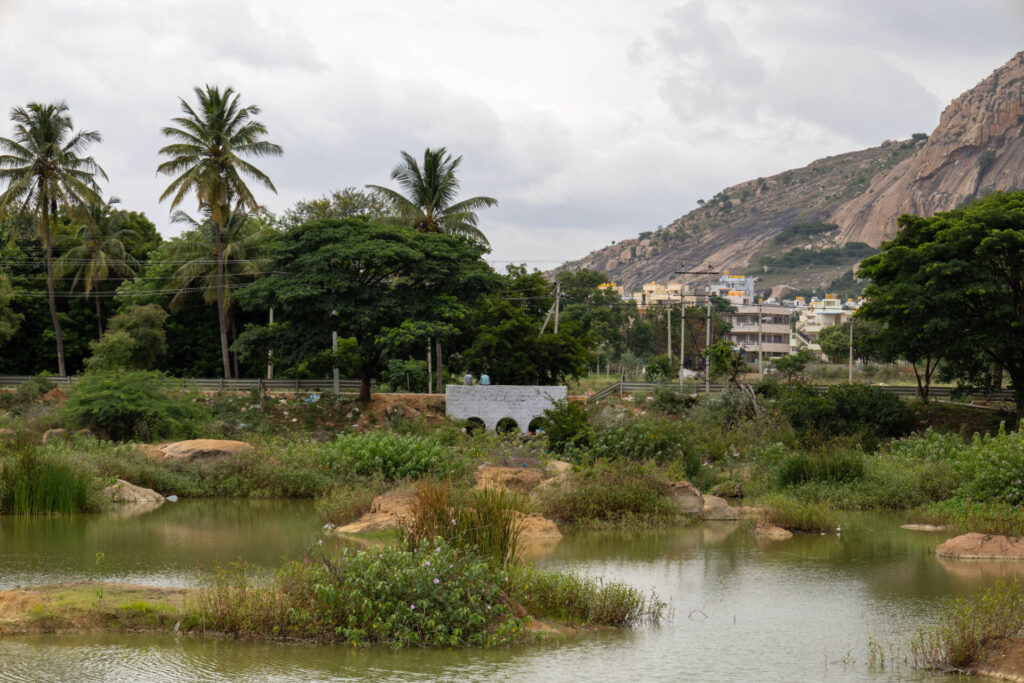

Shallow Aquifer Management: Given the limitations of groundwater extraction at depth, there is increasing interest in restoring shallow aquifers.
Shallow Aquifer Management (SAM) refers to intentionally managing the recharge, storage, extraction, and quality of water in unconfined or shallow groundwater aquifers that is typically within ~20–50 m depth.
Because these aquifers are close to the surface, they are:
- easier and cheaper to recharge via rainwater harvesting, check dams, farm ponds, recharge wells, trenches, etc.;
- entail a lower abstraction cost for the city/town, reducing the cost of supply;
- managed at community or village scale where they make groundwater visible so that over-extraction is easily observable and to which the community can respond.
These characteristics influence two current pathways in the Dodoma T-Lab. The first, articulated by Hosea Sanga from the Tanzanian Ministry of Water, relates to the piped water supply from groundwater in Dodoma and a shift in focus on shallow (<50 m in depth) groundwater resources that are known and monitored, rather than speculated (e.g. deep groundwater at depths of ~300 m). The team will build on evidence from groundwater-level monitoring and catchment water-balance calculations that suggest that current pumpage (61,500 m3/day) from the Makutapora Wellfield roughly equivalent to maximum freshwater capture. The second is to repurpose seasonal lakes in Dodoma City as Managed Aquifer Recharge (MAR) schemes to support the renewability of groundwater abstractions from the increasing number of private boreholes in Dodoma City. This latter pathway may also address intensive and competitive abstraction from weathered basement rocks in Katsina.
To conclude, the CLARITY Annual Meet offered a space for teams to share their methods, reflect on progress, and exchange ideas shaped by the realities of their respective T-Labs. Through discussions on modelling, aquifer dynamics, gender-responsive design, and co-production of knowledge with the community, the teams explored both challenges and emerging strategies for working across diverse hydrological and social contexts.
Several themes emerged with resonance across the T-Labs: the importance of managing shallow aquifers, wastewater reuse, integrating gendered perspectives into design, and aligning incentives for sustainable use. No single pathway is going to be straightforward and engagement with stakeholders is the key. Looking ahead, these cross-learnings offer more than technical insight—they suggest pathways for sustained, locally meaningful change.
Edited & Uploaded by: Susan Varughese, WELL Labs
Published
CLARE Projects
CLARE Partners

